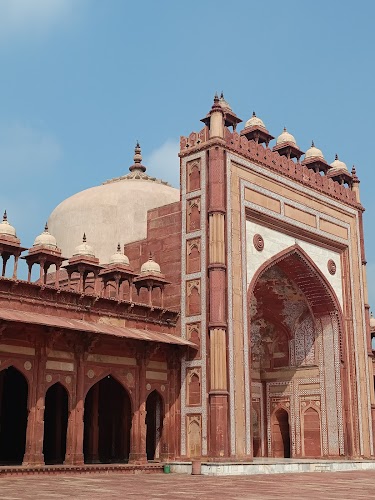
Buland Darwaza
Fatehpur Sikri, India
- Capture stunning photographs of the gateway.
- Enjoy panoramic views from the top.
- Explore the intricate carvings and inscriptions.
- Learn about Mughal history and architecture.
- Visit the Jama Masjid inside the complex.
Known for:
Description:
The Buland Darwaza (Door of Victory), an imposing gateway, stands as a magnificent entrance to the Jama Masjid at Fatehpur Sikri. Built by Emperor Akbar to commemorate his victory over Gujarat, it is a stunning example of Mughal architecture. Its sheer size and intricate carvings are breathtaking. Visitors are awestruck by the grandeur of the structure, which is made of red sandstone and adorned with white marble inlay. Calligraphy and Persian inscriptions decorate the facade, adding to its artistic appeal. The Buland Darwaza provides a captivating glimpse into the rich history and architectural prowess of the Mughal era. Climbing the steps offers panoramic views of the surrounding landscape, making it a memorable experience.
History:
Emperor Akbar commissioned the Buland Darwaza in 1601 to celebrate his successful military campaign in Gujarat. It took approximately 12 years to construct. The gateway served not only as a grand entrance but also as a symbol of Akbar's imperial power and religious tolerance. Inscriptions from the Quran are etched on the Buland Darwaza, reflecting Akbar's syncretic religious beliefs. It is a testament to the fusion of Persian and Indian architectural styles that characterized the Mughal period. Over the centuries, the Buland Darwaza has stood as a silent witness to the rise and fall of empires, preserving the legacy of a bygone era.